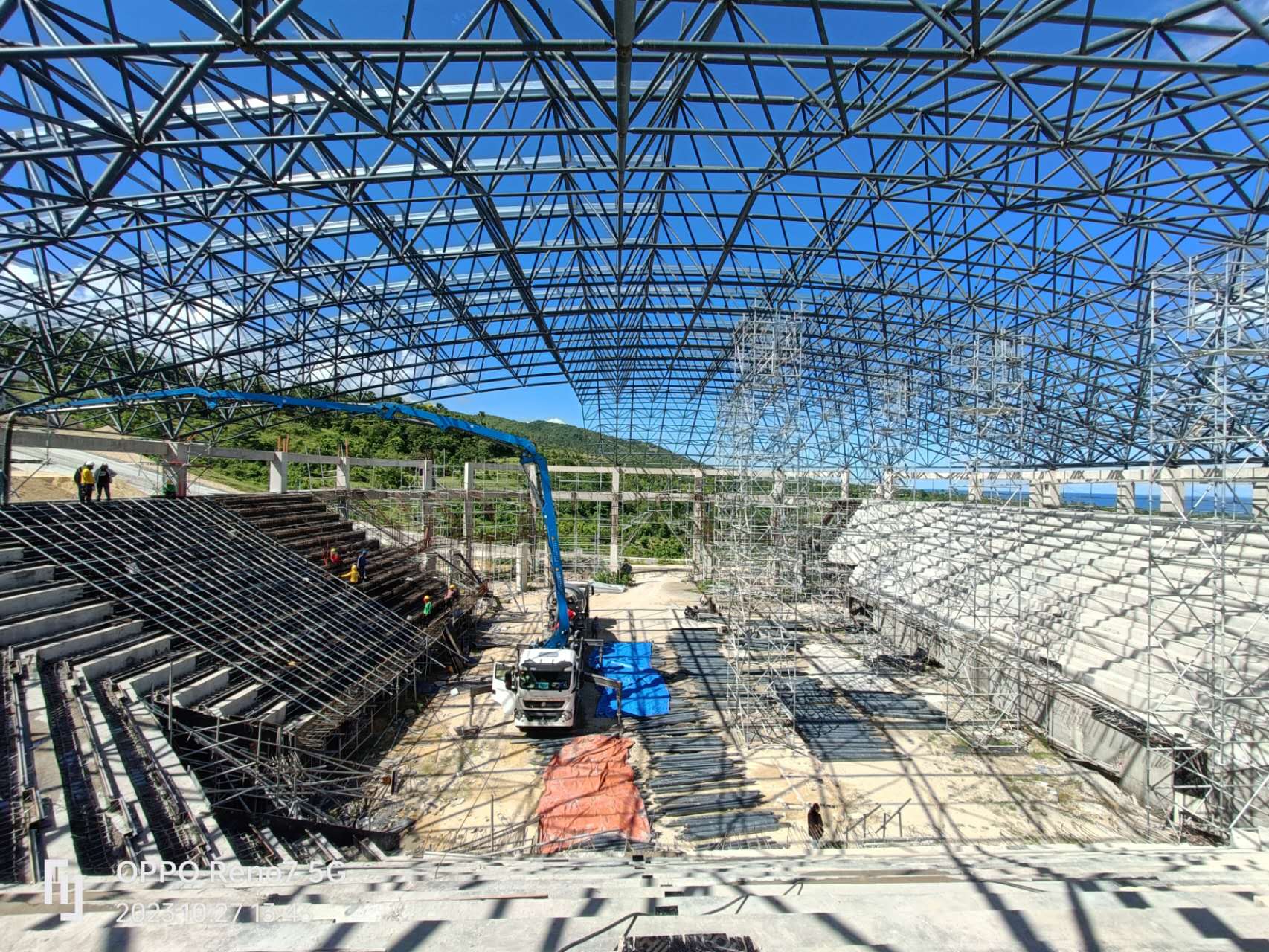Steel grid structure features

The steel grid structure is a spatial structure composed of multiple rods connected through nodes in a certain grid form. It has the following characteristics:
Good spatial stress performance: The steel grid structure transmits stress to the entire structure through the nodes, making the entire structure look like a whole, effectively utilizing the load-bearing capacity of each rod.
Good stability: The nodes of the steel grid structure are mostly connected by welding or high-strength bolts, which can ensure the overall stability of the structure. At the same time, due to its unique spatial stress characteristics, it has good earthquake resistance and wind resistance.
Convenient construction: The steel grid structure can be prefabricated in the factory and assembled on site, which greatly shortens the construction period and reduces the difficulty of construction.
Economy: Compared with traditional concrete structures, steel grid structures are lighter in weight and use less steel, so they can save costs.
Detachable and recyclable: Since each component of the steel grid structure can be easily disassembled and recycled, it meets the requirements of sustainable development.
Adaptability: The rods and nodes of the steel grid structure can be adjusted as needed to adapt to different building needs and design requirements.
Aesthetics: The steel grid structure has smooth lines and a modern appearance, which can bring good visual effects to the building.
Steel grid structures are suitable for buildings of various spans, heights and loads, and are widely used in industrial plants, warehouses, exhibition halls, sports venues and other buildings. Its design requires calculations and analysis based on engineering requirements, loads, and specifications to ensure the reliability and safety of the structure.


